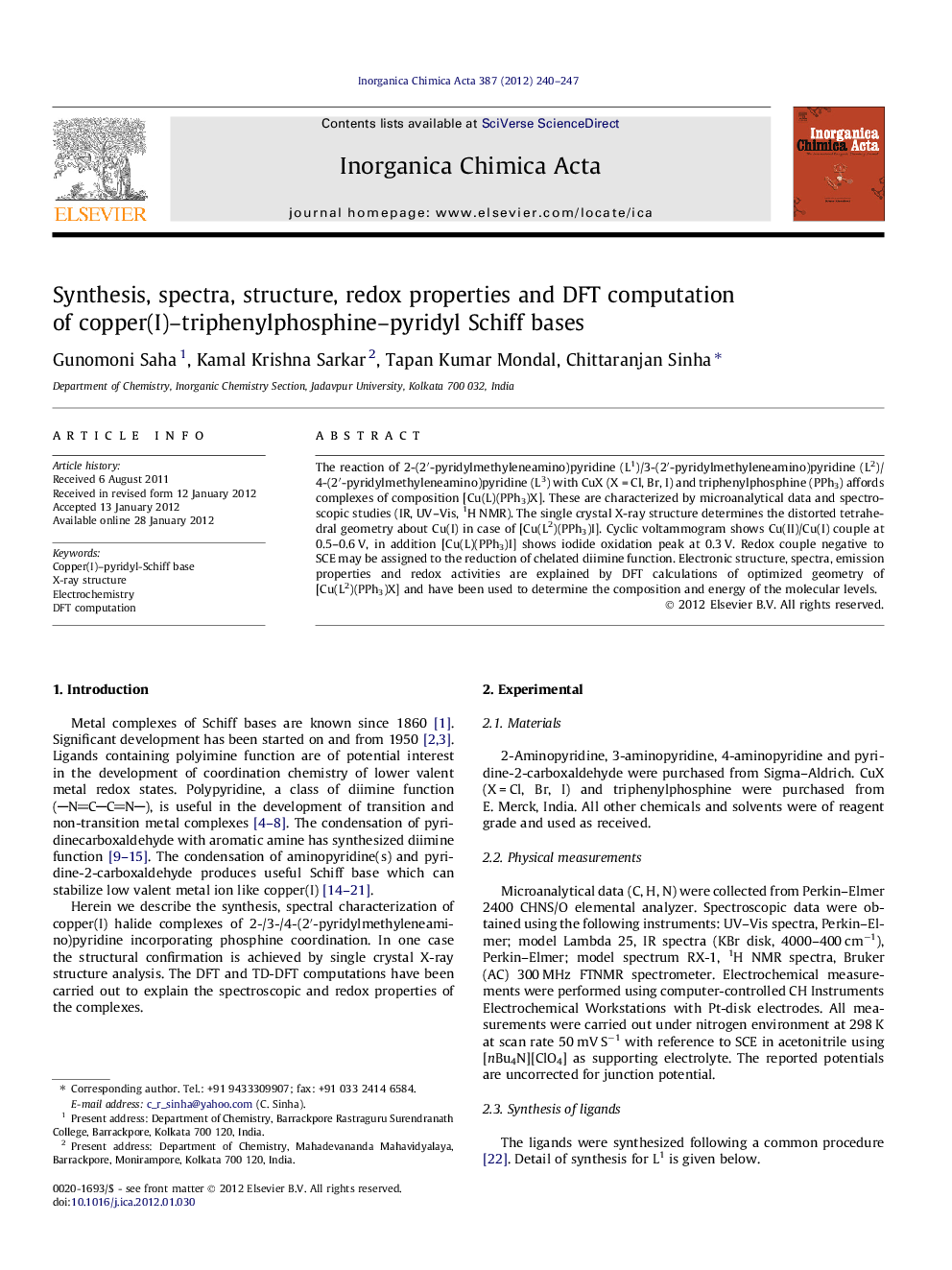| Article ID | Journal | Published Year | Pages | File Type |
|---|---|---|---|---|
| 1310900 | Inorganica Chimica Acta | 2012 | 8 Pages |
The reaction of 2-(2′-pyridylmethyleneamino)pyridine (L1)/3-(2′-pyridylmethyleneamino)pyridine (L2)/4-(2′-pyridylmethyleneamino)pyridine (L3) with CuX (X = Cl, Br, I) and triphenylphosphine (PPh3) affords complexes of composition [Cu(L)(PPh3)X]. These are characterized by microanalytical data and spectroscopic studies (IR, UV–Vis, 1H NMR). The single crystal X-ray structure determines the distorted tetrahedral geometry about Cu(I) in case of [Cu(L2)(PPh3)I]. Cyclic voltammogram shows Cu(II)/Cu(I) couple at 0.5–0.6 V, in addition [Cu(L)(PPh3)I] shows iodide oxidation peak at 0.3 V. Redox couple negative to SCE may be assigned to the reduction of chelated diimine function. Electronic structure, spectra, emission properties and redox activities are explained by DFT calculations of optimized geometry of [Cu(L2)(PPh3)X] and have been used to determine the composition and energy of the molecular levels.
Graphical abstractPyridylmethyleneaminopyridine, diimine functional ligand, reacts with CuX (X = Cl, Br, I) and PPh3 to prepare [Cu(L)(PPh3)X]. The distorted tetrahedral structure has been confirmed by X-ray diffraction study in case of [Cu(L2)(PPh3)I] (3b). Cyclic voltammogram shows Cu(II)/Cu(I) at 0.5–0.6 V, in addition [Cu(L)(PPh3)I] shows I−/I couple. Electronic structure, spectra and redox properties are explained by DFT calculations of optimized geometry of the complexes.Figure optionsDownload full-size imageDownload as PowerPoint slideHighlights► 2-/3-/4-(2′-Pyridylmethyleneamino)pyridine complexes of Cu(I)–PPh3 halide are described. ► The spectra and X-ray structure measurement establish the structure of the complexes. ► The cyclic voltammetry determines the high potential Cu(II)/Cu(I) redox activity. ► The computational study using optimized geometry has explained the spectral and redox findings.
